The automotive market is increasingly competitive, especially in the segment that caters to families and multipurpose needs. Two vehicles that have caught the attention of potential buyers are the Dacia Jogger and the Renault Kangoo. Both models come from the same parent brand and share a commitment to providing practical solutions, but they cater to slightly different audiences and embody distinct philosophies in design and technology. In this article, we will dive into a comparison of these two versatile vehicles, examining their technical specifications, innovations, and overall value for consumers.
Dacia Jogger vs Renault Kangoo – Which model is better for everyday use?
Compare performance, boot capacity, efficiency and price at a glance.
Find out which car is the better choice for you – Dacia Jogger or Renault Kangoo?
Design and Practicality
When it comes to design, the Dacia Jogger offers a modern MPV aesthetic with a rugged edge. With a length of 4547 mm, a width of 1784 mm, and a height of 1674 mm, the Jogger is designed to accommodate families with either five or seven seats. The vehicle’s trunk capacity of 607 liters is impressive, making it suitable for both daily errands and longer trips.
The Renault Kangoo, while traditionally known for its utilitarian design, has evolved significantly in its latest iterations. Although specific data on dimensions and capacity is currently unavailable, the Kangoo often emphasizes its practical features, such as sliding doors for easier access in tight spaces and modular cargo options to maximize interior versatility.
Engine Options and Performance
The Dacia Jogger boasts a range of engine options that cater to diverse consumer preferences. It offers a selection of petrol, LPG, and full hybrid engines with power outputs ranging from 91 HP to 140 HP. The full hybrid variant emphasizes fuel efficiency, achieving consumption figures as low as 4.7 liters per 100 km, appealing to environmentally conscious buyers.
In terms of torque, the Jogger delivers between 170 Nm to 200 Nm, depending on the chosen variant, ensuring a comfortable driving experience regardless of load. With a top speed reaching up to 174 km/h and an acceleration from 0 to 100 km/h in as little as 9.8 seconds, the Jogger provides a dynamic driving experience, combining performance with practicality.
Transmission and Drive Type
The Jogger offers both automatic and manual transmission options, allowing drivers to select their preferred driving experience. As a front-wheel-drive vehicle, it provides ample grip and stability, particularly under varying weather conditions. This is an advantageous feature for families who prioritize safety and comfort during their journeys.
Technological Innovations
Renault has equipped the Kangoo with various technological advancements, focusing on user convenience and safety. Although specific features for the most recent model year are not detailed, innovations typically include advanced driver assistance systems, an intuitive infotainment suite, and smart cargo management tools that make loading and unloading easier.
The Dacia Jogger, on the other hand, leans into practicality with features like a modular interior that adapts to different passenger and cargo needs. The option for a hybrid engine showcases Dacia's commitment to sustainability, providing a cleaner, more efficient driving option for eco-minded consumers.
Value for Money
One of the strongest selling points for both the Dacia Jogger and the Renault Kangoo is their value-for-money proposition. Dacia has a well-established reputation for offering no-nonsense vehicles at affordable prices, and the Jogger is no exception. With competitive pricing for a family-oriented vehicle packed with features, it stands out in a crowded marketplace.
The Renault Kangoo, traditionally focused on the commercial sector, remains an excellent investment for families seeking practicality, especially over long distances or for transporting goods. Its proven reliability and efficiency make it a worthy contender in this comparison.
Conclusion
Ultimately, the choice between the Dacia Jogger and the Renault Kangoo boils down to specific needs and preferences. The Jogger appeals to families looking for a stylish, modern MPV with flexible seating and cargo options, while the Kangoo remains a loyal companion for those needing a rugged, straightforward vehicle with practicality at its core. Both models offer unique advantages and will undoubtedly cater to the diverse requirements of today’s drivers.
Here’s where it gets real: The technical differences in detail
Costs and Efficiency:
When it comes to price and running costs, the biggest differences usually appear. This is often where you see which car fits your budget better in the long run.
Dacia Jogger has a significantly advantage in terms of price – it starts at 15400 £, while the Renault Kangoo costs 23100 £. That’s a price difference of around 7637 £.
Fuel consumption also shows a difference: Dacia Jogger manages with 4.70 L and is therefore to a small extent more efficient than the Renault Kangoo with 5.20 L. The difference is about 0.50 L per 100 km.
Engine and Performance:
Under the bonnet, it becomes clear which model is tuned for sportiness and which one takes the lead when you hit the accelerator.
When it comes to engine power, the Dacia Jogger has a barely noticeable edge – offering 140 HP compared to 130 HP. That’s roughly 10 HP more horsepower.
In acceleration from 0 to 100 km/h, the Dacia Jogger is to a small extent quicker – completing the sprint in 9.80 s, while the Renault Kangoo takes 11.60 s. That’s about 1.80 s faster.
In terms of top speed, the Renault Kangoo performs slight better – reaching 184 km/h, while the Dacia Jogger tops out at 174 km/h. The difference is around 10 km/h.
There’s also a difference in torque: Renault Kangoo pulls distinct stronger with 270 Nm compared to 200 Nm. That’s about 70 Nm difference.
Space and Everyday Use:
Cabin size, boot volume and payload all play a role in everyday practicality. Here, comfort and flexibility make the difference.
Both vehicles offer seating for 7 people.
In curb weight, Dacia Jogger is evident lighter – 1251 kg compared to 1585 kg. The difference is around 334 kg.
In terms of boot space, the Renault Kangoo offers noticeable more room – 950 L compared to 607 L. That’s a difference of about 343 L.
In maximum load capacity, the Renault Kangoo performs clearly better – up to 3050 L, which is about 1231 L more than the Dacia Jogger.
When it comes to payload, Renault Kangoo slight takes the win – 609 kg compared to 582 kg. That’s a difference of about 27 kg.
Who comes out on top?
Overall, the Dacia Jogger shows itself to be edges out slightly and secures the title of DriveDuel Champion.
It convinces with the more balanced overall package and proves to be the more versatile choice for everyday use.
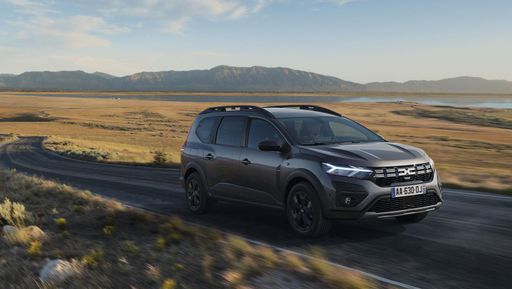 @ Dacia / Renault Group Media
@ Dacia / Renault Group Media
Dacia Jogger
Dacia Jogger
The Dacia Jogger offers a spacious and versatile interior, making it an excellent choice for families seeking practicality and comfort. Its design combines the robustness of an SUV with the functionality of an estate, providing a reliable option for various driving needs. With a focus on affordability, the Jogger ensures that essential features are accessible without compromising on quality.
details @ Dacia / Renault Group Media
@ Dacia / Renault Group Media
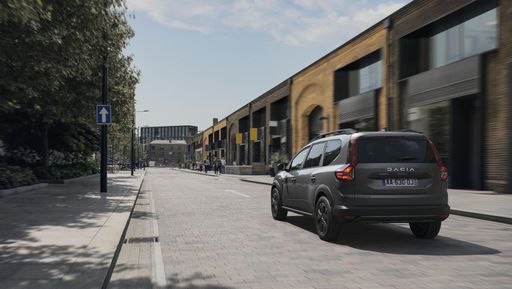 @ Dacia / Renault Group Media
@ Dacia / Renault Group Media
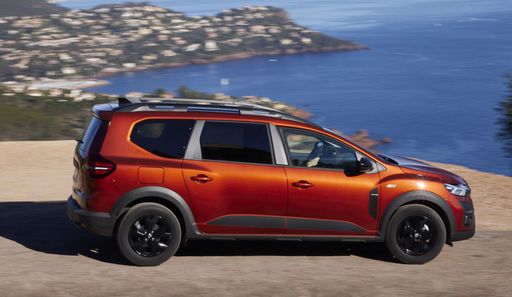 @ Dacia / Renault Group Media
@ Dacia / Renault Group Media
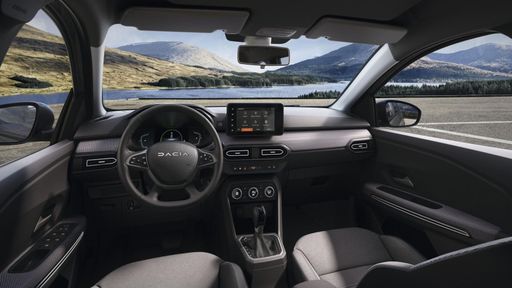 @ Dacia / Renault Group Media
@ Dacia / Renault Group Media
Renault Kangoo
The Renault Kangoo high-roof van delivers a practical and versatile solution for both family and commercial use, with its spacious interior and adaptable seating arrangements. Its modern design and user-friendly features provide comfort and convenience, making it an appealing option for those needing a reliable workhorse. Additionally, the efficient engine options ensure a balanced approach to performance, keeping running costs manageable for everyday driving.
details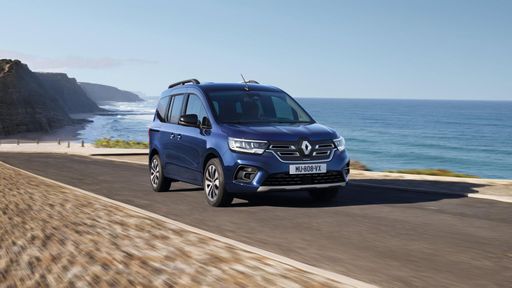 @ Renault Group Media
@ Renault Group Media
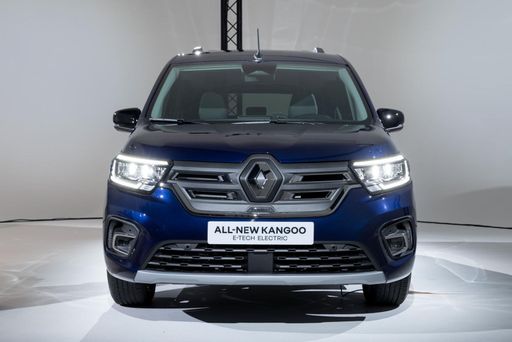 @ Renault Group Media
@ Renault Group Media
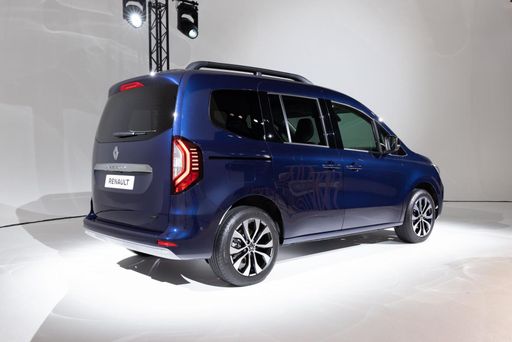 @ Renault Group Media
@ Renault Group Media
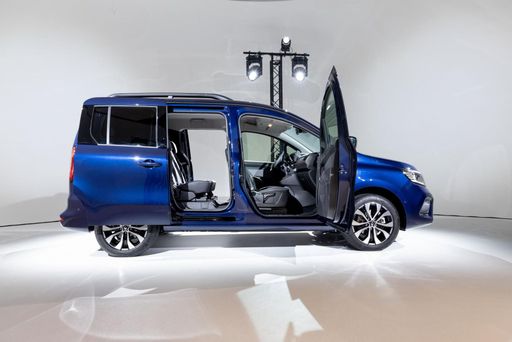 @ Renault Group Media
@ Renault Group Media
 @ Renault Group Media
@ Renault Group Media
 @ Renault Group Media
@ Renault Group Media
 @ Dacia / Renault Group Media
@ Dacia / Renault Group Media
|
 @ Renault Group Media
@ Renault Group Media
|
|
|
|
Costs and Consumption |
|
|---|---|
|
Price
15400 - 23400 £
|
Price
23100 - 36200 £
|
|
Consumption L/100km
4.7 - 7.8 L
|
Consumption L/100km
5.2 - 7.1 L
|
|
Consumption kWh/100km
-
|
Consumption kWh/100km
20.2 - 21.5 kWh
|
|
Electric Range
-
|
Electric Range
278 - 285 km
|
|
Battery Capacity
0.60 kWh
|
Battery Capacity
-
|
|
co2
105 - 137 g/km
|
co2
0 - 161 g/km
|
|
Fuel tank capacity
40 - 50 L
|
Fuel tank capacity
54 L
|
Dimensions and Body |
|
|---|---|
|
Body Type
MPV
|
Body Type
High Roof Estate
|
|
Seats
5 - 7
|
Seats
5 - 7
|
|
Doors
5
|
Doors
5
|
|
Curb weight
1251 - 1460 kg
|
Curb weight
1585 - 2041 kg
|
|
Trunk capacity
160 - 607 L
|
Trunk capacity
500 - 950 L
|
|
Length
4547 mm
|
Length
4486 - 4911 mm
|
|
Width
1784 mm
|
Width
1860 - 1919 mm
|
|
Height
1674 mm
|
Height
1838 - 1869 mm
|
|
Max trunk capacity
1807 - 1819 L
|
Max trunk capacity
1296 - 3050 L
|
|
Payload
393 - 582 kg
|
Payload
400 - 609 kg
|
Engine and Performance |
|
|---|---|
|
Engine Type
Full Hybrid, LPG, Petrol
|
Engine Type
Diesel, Petrol, Electric
|
|
Transmission
Automatic, Manuel
|
Transmission
Manuel, Automatic
|
|
Transmission Detail
Automatic Gearbox, Manual Gearbox
|
Transmission Detail
Manual Gearbox, Dual-Clutch Automatic, Reduction Gearbox
|
|
Drive Type
Front-Wheel Drive
|
Drive Type
Front-Wheel Drive
|
|
Power HP
91 - 140 HP
|
Power HP
95 - 130 HP
|
|
Acceleration 0-100km/h
9.8 - 13.2 s
|
Acceleration 0-100km/h
11.6 - 15.6 s
|
|
Max Speed
167 - 174 km/h
|
Max Speed
130 - 184 km/h
|
|
Torque
160 - 200 Nm
|
Torque
200 - 270 Nm
|
|
Number of Cylinders
3 - 4
|
Number of Cylinders
4
|
|
Power kW
67 - 103 kW
|
Power kW
70 - 96 kW
|
|
Engine capacity
999 - 1598 cm3
|
Engine capacity
1332 - 1461 cm3
|
General |
|
|---|---|
|
Model Year
2024 - 2025
|
Model Year
2022 - 2024
|
|
CO2 Efficiency Class
C, D
|
CO2 Efficiency Class
E, F, D, A
|
|
Brand
Dacia
|
Brand
Renault
|
What drivetrain options does the Dacia Jogger have?
The Dacia Jogger is offered with Front-Wheel Drive.
The prices and data displayed are estimates based on German list prices and may vary by country. This information is not legally binding.
